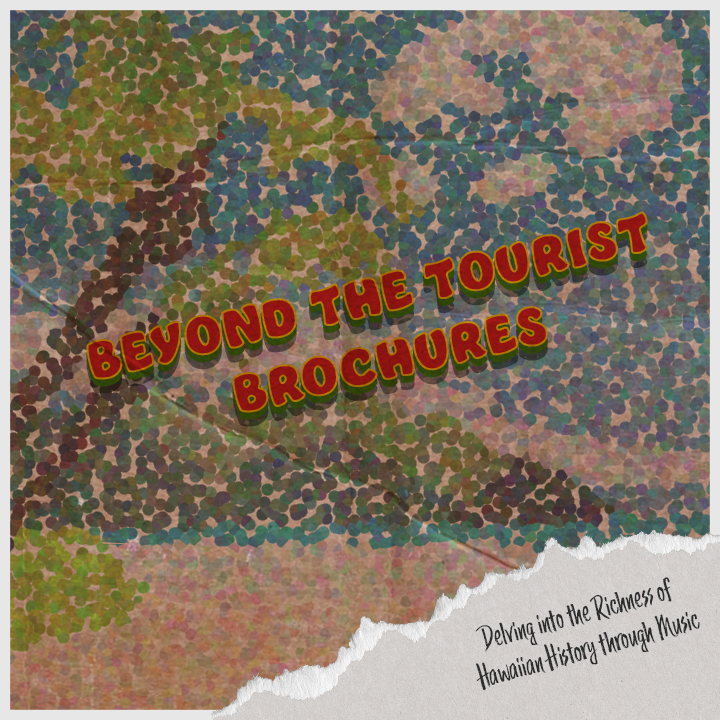Beyond the Tourist Brochures: Delving into the Richness of Hawaiian History through Music
May 25, 2023
Having been born and raised in Hawaiʻi, we learned Hawaiian history from elementary school all the way to high school. I understand that here in the states, Hawaiian History is not a part of the curriculum. So today, I will briefly educate you about Hawaiian History through Hawaiian music. I believe that everyone should know at least the basics of Hawaiian History, especially if you plan to visit the islands of Hawaiʻi.
First and foremost, let’s clear the air. Just because someone is from the islands of Hawaiʻi, even if they were born and raised there, it does not automatically make them Hawaiian. The term ‘Hawaiian’ is not used in the same way as ‘Oregonian.’ Hawaiian refers specifically to Native Hawaiians, individuals with native Hawaiian blood. Another way to refer to Native Hawaiians is Kānaka Maoli. It is important to recognize Native Hawaiians for who they are and to avoid disrespecting them by misusing the term ‘Hawaiian.’
Prior to the annexation, Hawaiʻi had its own government and operated under a monarchy system. King Kamehameha the Great was the first ruler of the Kingdom of Hawaiʻi. Hawaiʻi had a total of eight monarchs before being taken over by the US. On July 7, 1898, the Hawaiian islands were illegally annexed, and two years later, in 1900, Hawaiʻi became a U.S. territory. History continued, and in 1959, Hawaiʻi became the 50th state of the US. However, five years prior to the annexation, in 1893, a group of American businessmen and lawyers staged a coup against Queen Liliʻuokalani and her government, resulting in the overthrow of the Hawaiian monarchy. They placed Queen Liliʻuokalani under house arrest during this time. Despite her imprisonment, Queen Liliʻuokalani engaged in various activities, including music composition.
One notable composition is “Aloha ʻoe” by Queen Liliʻuokalani. “Aloha ʻoe” translates to “farewell to thee.” During her imprisonment, “Aloha ʻoe” became a song of protest for Queen Liliʻuokalani and the Hawaiian people. It was originally written and composed in 1878 when Queen Liliʻuokalani witnessed a woman bidding farewell to her loved one.
In addition there are chants called mele, which were created to remember myths and stories of the native people.
For example, “He Mele No Kuʻu Hawaiʻi” by The Green ft. Students of Hālau Lōkahi Charter School roughly translates to “a song for my Hawaiʻi.” Music plays an important role in Hawaiian culture, similar to many other cultures.
Another song, “Mele Laʻi” by Lukela Keala, translates to “calm” or “stillness” and reflects a sense of peace.
Israel ‘IZ’ Kamakawiwoʻole’s “Hawaiʻi ʻ78” is a song about the beauty of Hawaiʻi but also highlights the injustices faced by Native Hawaiians and the jarring effects of urbanization on the islands.
In 1896, the Native Hawaiian language, ʻOlelo Hawaii, was banned from being taught in schools for nearly 80 years. It wasn’t until the Hawaiian renaissance of the 70s that the language, music, and culture became a focal point of the fight for preservation, as it was near extinction. This is why music sung in ʻOlelo Hawaii holds such great importance. Here are some more songs sung in ʻOlelo Hawaii.
“Ka Pilina” by Sean Naʻauao roughly translates to “association,” “relationship,” “union,” or “connection.” Naʻauao sings about birds singing and chirping throughout different points in time, leading him to his beloved.
“Wena” by Josh Tatofi roughly translates to “the glow of a sunrise or fire” and also represents a close relationship.
“Kuʻu Lei Awapuhi” by Hapa roughly translates to “where are you, my beloved?”
“Masese” by Kapena is a song that incorporates a mixture of Fijian and Hawaiian. “Masese” is roughly translated to “captain” in ʻOleo.
For communities like Kānaka Maoli, music is not only meaningful due to its beautiful lyrics and its ability to bring people together but also because it helps preserve an entire culture and its history. Unfortunately, Kānaka Maoli are still fighting for their rights to their land back home on the islands of Hawaiʻi. So, the next time you visit or think about visiting Hawaiʻi, take some time to truly understand the history of its people and the land that surrounds them.

